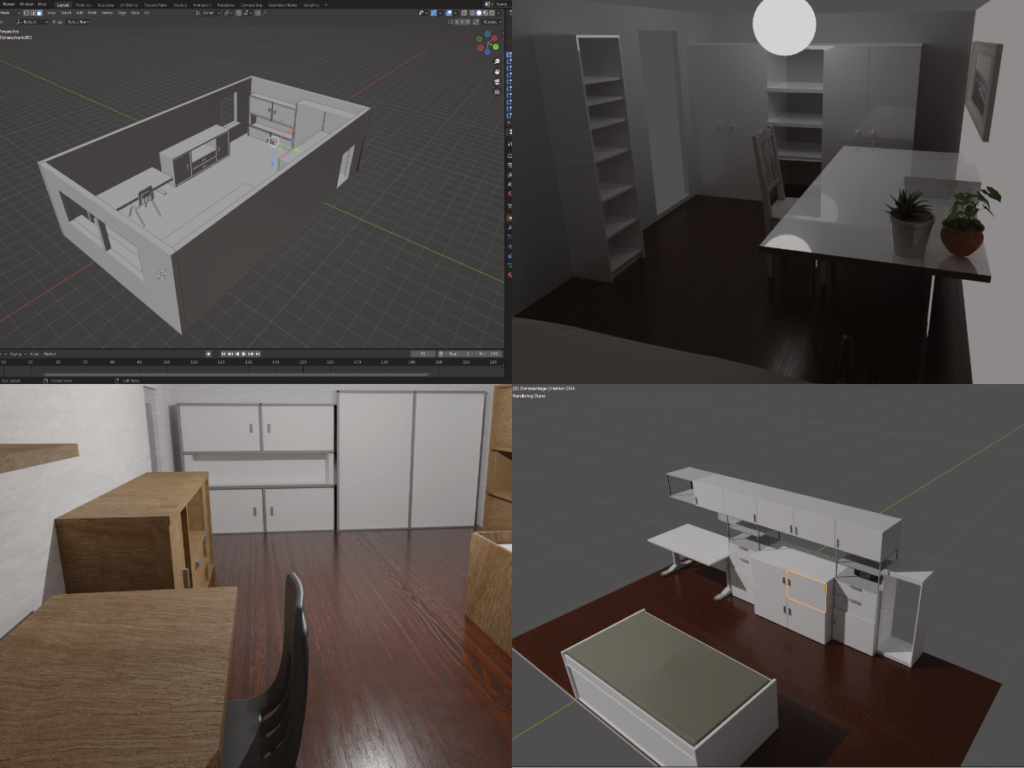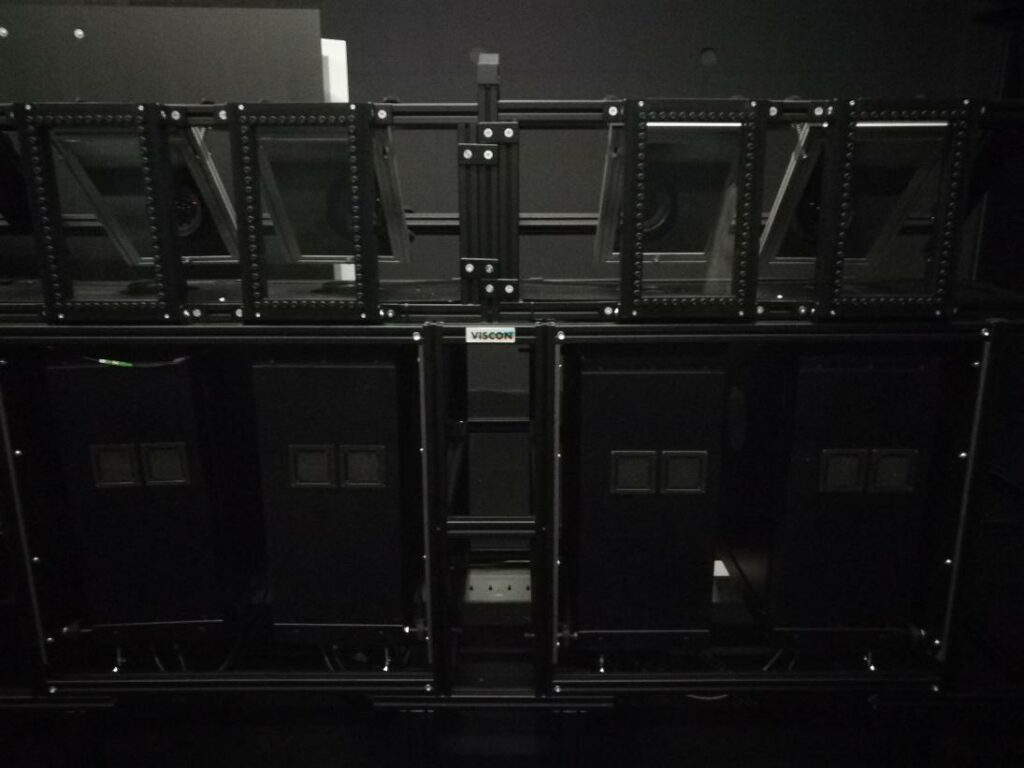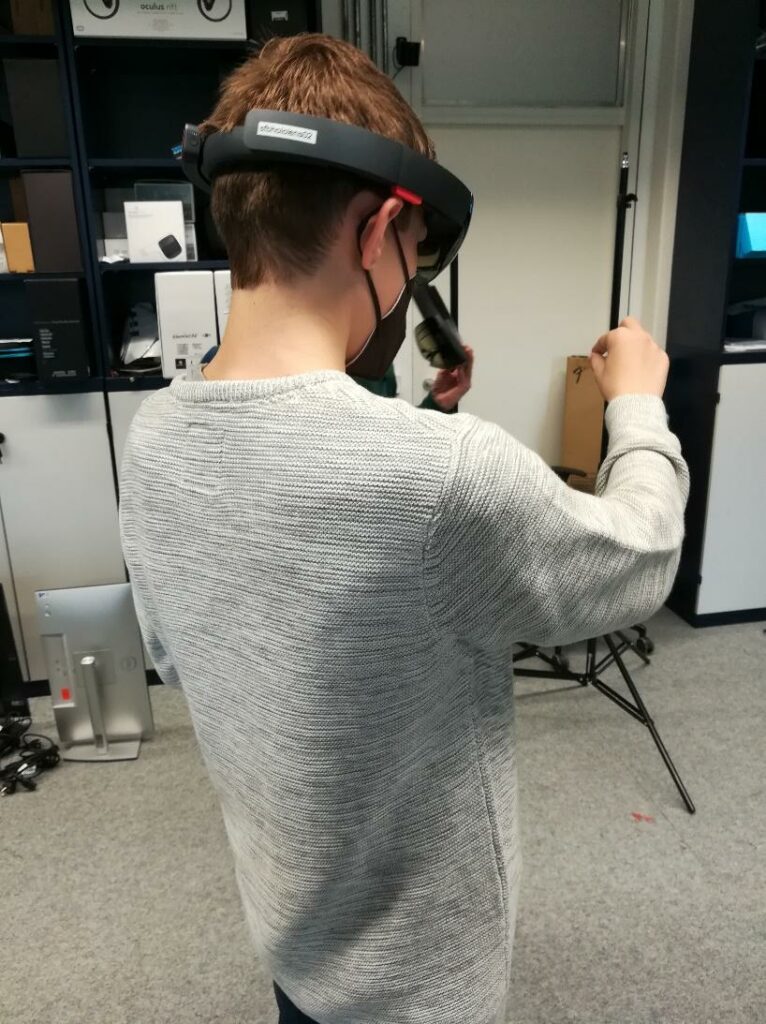From 4 to 8 April 2022, Juli, Jannis and Cedric completed their BOGY internship at the Visualization Institute (VISUS) of the University of Stuttgart. They got an insight into the world of programming, tried out different technologies and worked on their own projects. The internship was carried out as a cooperation between VISUS, the SFB-TRR 161 and the Cluster of Excellence IntCDC.
Below you can find their internship report.
BOGY Internship at the University of Stuttgart
From 04-08.04.2022 we were allowed to do a BOGY internship at the Visualization Research Center at the University of Stuttgart. We were given many insights into different areas of research, we could talk to students about their work and try out and apply various things.
On the first day, our tutors gave us an introduction to the C++ programming language and we wrote our first programs in it. We then applied our knowledge to programming an Arduino Micro and used it to control LEDs, for example.
Talks with students
A big highlight for us were the talks with the students, who told us a lot about studying computer science, their work and the techniques behind it. For example, we were able to test one student's VR project and another student explained the basics of VR programming with Unity.
Virtual lecture
Actually, we wanted to attend a real lecture, but since they didn't start again until the following week, we were shown a recording instead. We were introduced to various methods and processes of visualising data and were still able to experience the progression of a lecture.
Blender
Another big highlight of our BOGY internship was the introduction to the 3D graphics software Blender. After the basics were explained to us, we started modelling our rooms. After many hours of work, we were done with the models, which then had to be textured. Once that was done, the rooms were finally ready to be exported. Modelling with Blender was really a lot of fun and we now have the necessary knowledge to use Blender at home.

MegaMol
The program MegaMol is the software developed by VISUS itself for the visualisation of both 2D and 3D data, with which they can illustrate research results or test the performance and power consumption of different graphics cards.
We were now able to import our exported Blender 3D model into MegaMol and create a camera tour of the rooms.
Guided tour of the technology
On Thursday we were given a tour of the server rooms in the VISUS building, which were very impressive. The most impressive thing was the Powerwall.

A huge, extremely high-resolution screen that requires a full 20 computers to operate. Two computers control a pair of projectors at a time, which means the screen can even display 3D. Unfortunately, since the Powerwall room is currently being used as a recording room for the professors' digital lectures, we were unable to see the Powerwall in action.
HoloLens
What we've been looking forward to all week finally happened on Thursday afternoon: We were allowed to test the Microsoft HoloLens! The HoloLens are AR glasses.

This means that virtual objects are placed in the real world and you can interact with them using either voice control or gestures. We were able to try out two demo programs: In the first, a 3D model of a huge building complex was projected in front of us. In the second, we were able to place different molecules in space, walk around them, move them, scale them and interact with them in many other ways.
It was a unique experience that we will not be able to repeat any time soon.
Git and GitHub
At the end of the BOGY internship, we got an introduction to Git and synchronisation with GitHub, which will make it easier for us to collaborate on larger programming projects.
It was a very exciting and fun week! We learned a lot and gained experience that will help us even after this great week. We would love to do the BOGY internship again and would highly recommend it to any future computer scientist.
We especially want to thank our two tutors Matthias and Tobias for the unique five days and the constant help with problems! Also, we would like to thank the nice students and other VISUS staff members who gave us an insight into their research.
More information (in German) can be found here.


